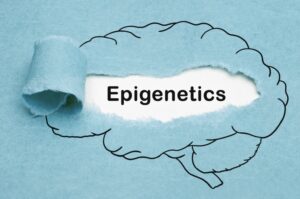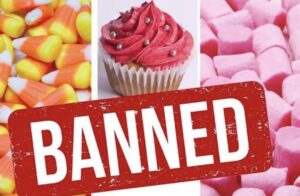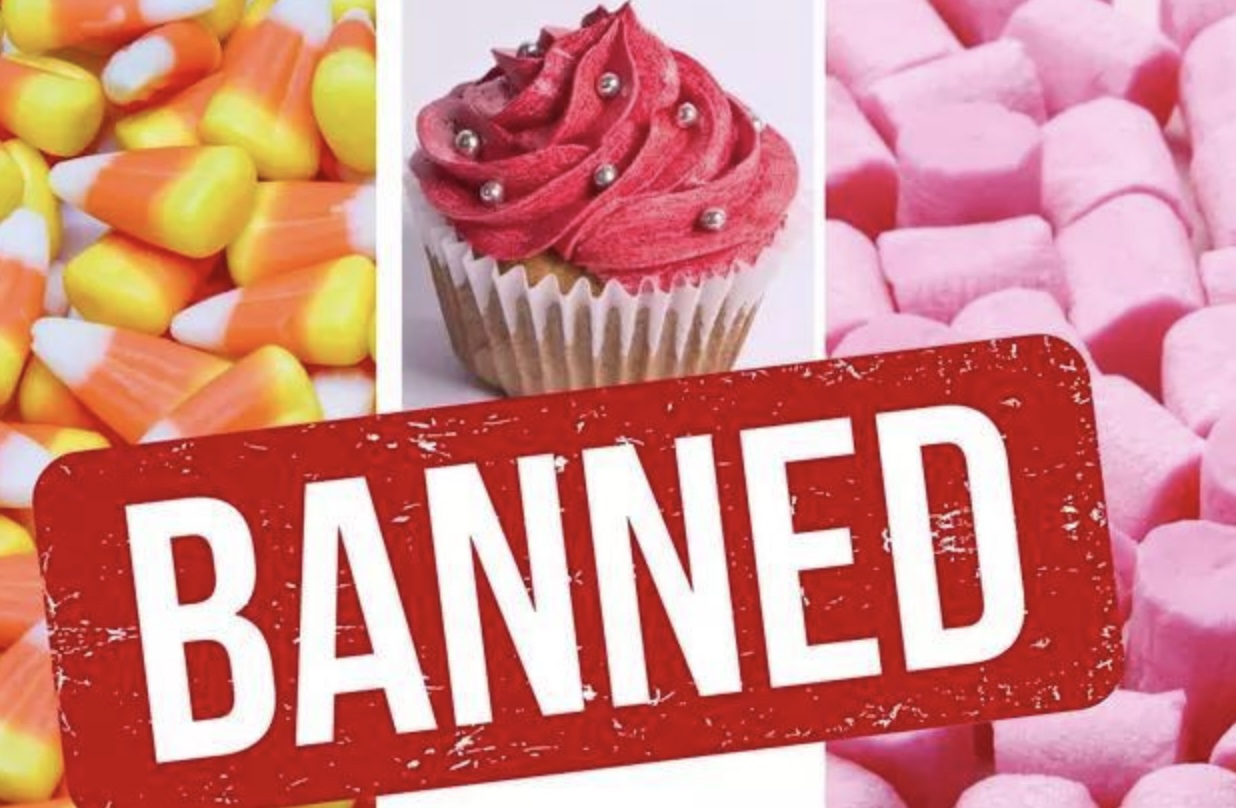RED #3: This is FANTASTIC NEWS!
In January, the U.S. Food and Drug Administration (FDA) FINALLY banned Red No.3 in food and ingested drugs. The bizarre thing is that this dye has been banned since 1990 from use in cosmetics and topical drugs due to its tendency to cause cancer and especially thyroid cancer. Yet it was allowed to be used in FOOD!
This, in combination with a well-documented iodine deficiency in America, may account for the approximately 35 million people with thryoid problems in America today. This is a conservative estimate of about 10% of our population. And the truth is, if at least 10% of the population is prone to thyroid issues, protecting Americans from thyroid cancer would seem to be a high priority.
Red No.3 is a synthetic color additive commonly used in food products such as baked goods, desserts, and candies. It is also found in certain over-the-counter and prescription drugs. There’s a longer list below, so you can quickly reference it. Big Food has until Jan, 15, 2027 to get the RED #3 out, and Big Pharma has until Jan. 18, 2028 to get it out of ingested drugs. In the meantime – read the labels! Some other names it goes by are:
- Erythrosine
- Erythrosine B
- FD&C Red No. 3
- Acid Red 51
- CI 45430 (Color Index Number)
- INS 127 (International Numbering System for Food Additives)
What’s Wrong with Red No.3? How Bad Is It for You?
Concerns have grown over the safety of Red No.3, as studies have linked it to cancer and thyroid tumors in lab animals. Prolonged exposure has raised questions about its potential risks to human health. The Center for Science in the Public Interest, the group that got trans-fats labelled then banned, and increased education about the HUGE amount of High Fructose Corn Syrup in sodas as the “Liquid Candy” campaign of the late 90’s, has lobbied to get Red #3 removed. In 2016, CSPI released “Seeing Red – Time for Action on Food Dyes,” urging the FDA to ban or limit artificial food colorings due to potential behavioral effects in children.

How does this happen?
Put simply, the United States is young, from an international perspective. There are a lot of qualities that do indeed make us great in part because of that youthful determination and belief that things can change for the better: Freedom, Democracy, the Melting Pot of America, Innovation, Resilience, and Adaptability.
In comparison, Europe has been organized with cities and governments, which is the definition of civilization, for about 7000 years. The United States is 249 years old. It’s not surprising that Europe has a very different policy about what is allowed to be defined as food: it has to be proven to be safe. The US, like any good adolescent, declares “Prove it!” and instead requires that it must be proven to be dangerous. We employed the same policy with the space program back in the 60’s. We lost Apollo 1 and its astronauts Ed White, Gus Grissom, and Roger Chaffee. We almost lost Apollo 13 in 1970. We lost the manned Space Shuttle Challenger in 1986 and Columbia in 2003. These avoidable disasters can all be contributed to policies of moving too fast, and not emphasizing safety enough – characteristics of youth.
Is it any surprise we make the same mistake with our food? Yet we have the ability to learn, and voting with your dollars – not buying unsafe food – is the fastest way to get it taken off the shelves.
In the words of the famous GI Joe:
Now you know, and knowing is half the battle.

Does it affect people differently? How do I know if I’m at risk?
Although the levels commonly found in foods and medications are considered safe by some regulatory standards, persistent use and cumulative exposure remain contentious issues. For individuals especially sensitive to synthetic additives or those looking to minimize their intake of artificial substances, avoiding Red No.3 may be a prudent choice. Certain genetic markers help us see why certain people are even more at risk from exposure to Red #3. They are:
GENETIC TESTS
✅ MTHFR (Methylenetetrahydrofolate Reductase) Gene Mutation
• Red #3 contains fluorescein, which the body must detoxify.
• MTHFR mutations can impair methylation, making it harder to process food dyes and synthetic chemicals.
• Lab test: MTHFR genetic testing (via blood or saliva).
✅ GST (Glutathione S-Transferase) Gene Mutations (GSTT1, GSTM1, GSTP1)
• These genes regulate glutathione detoxification, essential for clearing synthetic dyes.
• Deficient GST function = higher oxidative stress & poor dye clearance.
• Lab test: Genetic test for GST mutations.
✅ COMT (Catechol-O-Methyltransferase) Mutation
• Affects dopamine metabolism and methylation.
• People with slow COMT function may experience neurotransmitter imbalances, potentially leading to hyperactivity, anxiety, or mood swings from dyes.
• Lab test: Genetic test for COMT polymorphisms.

If you’re a follower of the science of epigenetics, populartized by former Stanford professor Bruce Lipton, PhD, you are aware that science shows we have the ability to flip genes on and off. To that end, certain other tests may be more useful when we’re looking at detox pathways. These tests like:
FUNCTIONAL TESTS
✅ Liver Function Tests (LFTs)
Blood tests are good at showing if there is liver damage.
However, if you’re a bit like me, you’d like to know BEFORE it gets that far! Here’s how:
🩸 Blood vs. 🚽 Urinary Markers: When to Use Each?
🚽 Urinary Markers (D-Glucaric Acid & Mercapturic Acids) – Functional Detox Testing
✅ Best for early toxin exposure detection (before liver cell damage).
✅ Useful for chemical, drug, or environmental toxin exposure monitoring.
✅ Helps assess Phase I & II detox efficiency (especially glutathione function).
✅ Does NOT indicate structural liver damage (just how hard the liver is working).
🩸 Blood Markers (AST, ALT, Bilirubin, ALP) – Liver Damage Testing
✅ Best for detecting actual liver injury or disease (hepatitis, fatty liver, cirrhosis).
✅ Useful for routine liver function tests (LFTs) in clinical settings.
✅ Does NOT assess detox efficiency—only shows if liver cells are damaged or bile flow is blocked.
Ready to discover YOU?
Book an initial consult that includes the DETOX Urinary Markers for impaired Liver Pathways for $599. You’ll do the at home first thing in the morning urinary test before your initial appointment, and we’ll include the analysis of this during your intake. These appointments can be done in person or via Zoom. Just click here and choose either Dr. Cynthia Initial with Hepatic Detox Testing to get started, or Complimentary Consult with Dr. Cynthia.

Red #3 Foods
Which foods have Red #3? Get ready – a lot of old favorites might be on here!
You may be wondering which specific food products and drugs will be affected by this decision. The FDA has provided a list on their website (https://www.fda.gov/food/hfp-constituent-updates/fda-revoke-authorization-use-red-no-3-food-and-ingested-drugs) where you can find more information about the impacted items.
Here is a list of 30 popular foods that previously contained Red No.3, so that you can know if you’ve already been injesting this. For people with impaired detoxification systems, a little can go a long way. And chances are this isn’t the only liver-congester you’ve been consuming.
- Peeps Marshmallow Candies: These iconic marshmallow treats often use Red Dye No. 3 to achieve their vibrant colors.
- Hostess Ding Dongs: Some varieties of this snack cake include Red Dye No. 3 in their ingredients.
- Betty Crocker Fruit by the Foot: This fruit-flavored snack utilizes Red Dye No. 3 for its bright appearance.
- Dubble Bubble Chewing Gum: The classic bubble gum incorporates Red Dye No. 3 to enhance its color.
- Entenmann’s Little Bites: Certain varieties of these mini muffins contain Red Dye No. 3.
- Brach’s Candy Corn: This popular seasonal candy lists Red Dye No. 3 among its ingredients.
- Betty Crocker Red Decorating Icing: Used for cake and cookie decoration, this icing contains Red Dye No. 3.
- TruMoo Strawberry Milk: This flavored milk beverage includes Red Dye No. 3 to achieve its pink hue.
- Kroger Extra Cherry Canned Fruit Cocktail: This fruit product uses Red Dye No. 3 to enhance the color of the cherries.
- Ensure Original Strawberry Shake: This nutritional drink contains Red Dye No. 3 for its strawberry flavor variant.
- Betty Crocker Loaded Mashed Potatoes: Surprisingly, this savory dish includes Red Dye No. 3 in its formulation.
- PediaSure Grow & Gain Kids’ Ready-to-Drink Strawberry Shake: This children’s nutritional supplement contains Red Dye No. 3.
- Dole Fruit Packs: Certain fruit cup products from Dole have been found to contain Red Dye No. 3.
- Jelly Belly Candies: Some varieties of these jelly beans use Red Dye No. 3 for coloring.
- Trolli Sour Crunchy Crawlers: This gummy candy includes Red Dye No. 3 among its ingredients.
- Archer Farms Hand Decorated Sugar Cookies: These decorative cookies contain Red Dye No. 3 in their icing.
- Blue Bunny Chocolate Donut Ice Cream: This ice cream flavor incorporates Red Dye No. 3 for its visual appeal.
- Brach’s Star Brites: These peppermint candies list Red Dye No. 3 as an ingredient.
- Nesquik Strawberry-Flavored Low-Fat Milk: This flavored milk product contains Red Dye No. 3.
- Imitation Bacon Bits (e.g., Betty Crocker Pasta Salads): Some imitation bacon bits used in pasta salads include Red Dye No. 3.
- Hostess Cherry Pies: These pre-packaged cherry pies use Red Dye No. 3 to enhance the color of the filling.
- Maraschino Cherries: Many brands of maraschino cherries use Red Dye No. 3 to give their bright red appearance.
- Little Debbie Strawberry Shortcake Rolls: This snack cake contains Red Dye No. 3 in its filling and outer decoration.
- Vitamin Gummies: Some children’s and adult vitamin gummies list Red Dye No. 3 as a coloring agent.
- Hawaiian Punch: This popular fruit punch beverage frequently contains Red Dye No. 3 for its distinctive red hue.
- Red Vines: These classic red licorice candies include Red Dye No. 3 to achieve their vibrant color.
- Toaster Strudels (Strawberry Flavored): The icing and filling in these pastries often contain Red Dye No. 3 to enhance their appearance.
- Candied Red Apples: The glossy coating on many candied red apples is made using Red Dye No. 3.
- Turkey Hill Strawberry Ice Cream: This well-known ice cream brand uses Red Dye No. 3 in its strawberry flavor.
- Fruit Snacks (Various Brands): Some fruit snacks, especially those in strawberry or cherry flavors, list Red Dye No. 3 as an ingredient.
It can be overwhelming to discover that a wide range of commonly consumed foods and snacks contain Red Dye No. 3. However, awareness is the first step in making more informed choices. If you or your family are trying to reduce your intake of artificial dyes, consider reading ingredient labels carefully and seeking out natural or dye-free alternatives. Many companies are transitioning toward using natural colorings in their products, providing safer options for consumers.
What you can do?
-
Share this information! If you learned something reading this, you probably have friends that would, too!
-
Shop on the outside of the grocery store – where the fresh produce and proteins are.
-
When you do buy something packaged, read labels.
-
Get your liver detox function evaluated. Data matters!
-
Come to one of our upcoming classes!
🌿 Interested in learning more about how TCM can help you?
Book here! to schedule a consultation or call us at 941-923-9355. We’re ready to guide you toward personalized, holistic care.



